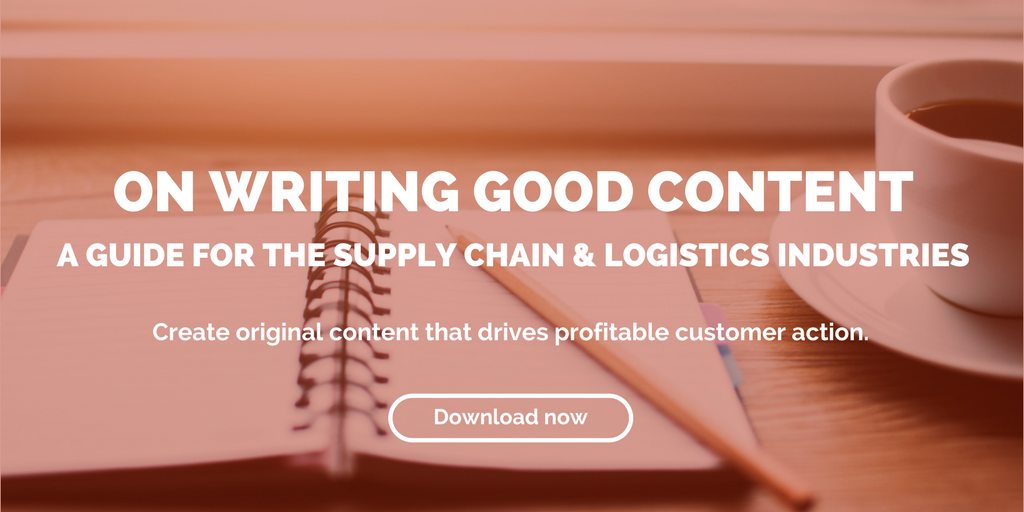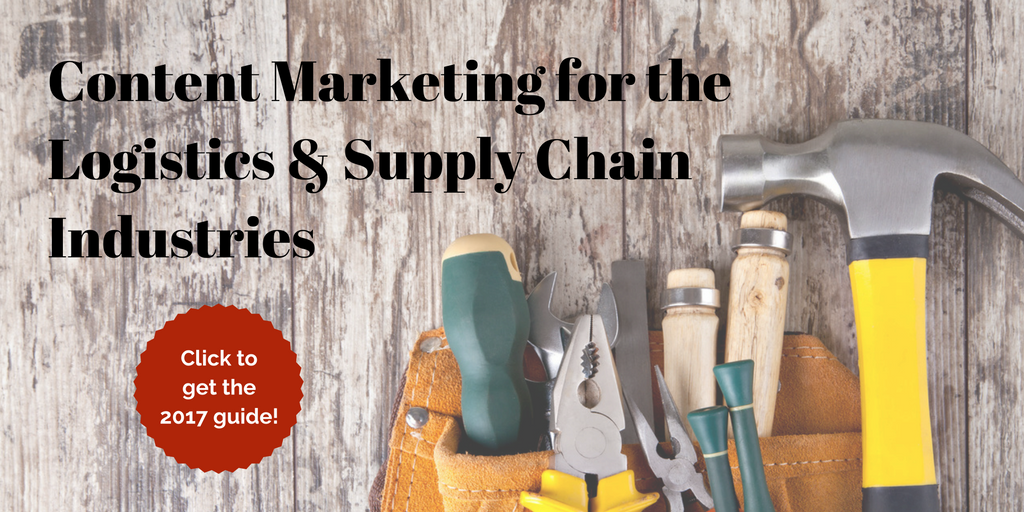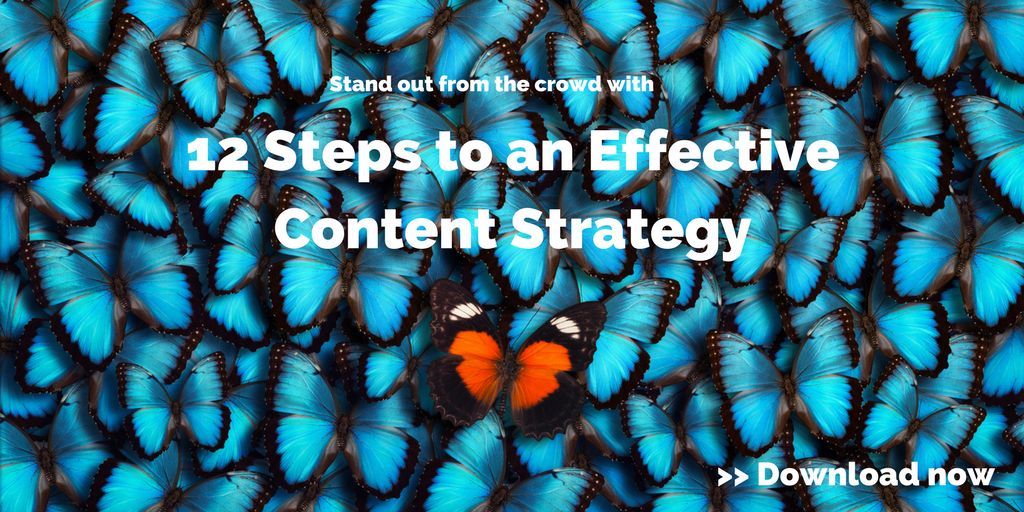
by Fronetics | Aug 22, 2018 | Blog, Content Marketing, Logistics, Manufacturing & Distribution, Marketing, Strategy, Supply Chain
Account-based marketing has traditionally utilized outbound marketing tactics, until now.
Account-based marketing has been around for decades, but it has been gaining a lot of attention in the past few years. More and more companies are starting to use account-based marketing to increase their brand awareness with specific audiences and work together with sales teams to close deals.
But what is account-based marketing?
Account-based marketing
Account-based marketing (ABM) is a focused approach to B2B marketing in which marketing and sales teams work together to target best-fit accounts and turn them into customers. Marketers and sales teams focus their efforts on specific accounts — companies, customers, target audiences — and work to get marketing materials in front of them.
Essentially, account-based marketing takes a potential customer and turns them into their own market. “[ABM] is to address the needs of organization by connecting with all of the stakeholders within it. That’s one reason why it works so well in B2B — oftentimes you have to work with five or more stakeholders in a given sale,” writes Sam Balter, HubSpot’s Corporate Marketing Manager.
So how can content marketing help with ABM, which has traditionally been a sales strategy?
Content marketing and account-based marketing
Inbound marketing focuses on audiences finding you. Instead of pushing a message onto buyers, inbound marketing allows you to establish your brand as an industry leader and let interested audiences come to you. This type of marketing attempts to draw in potential customers through interesting and engaging content.
Content marketing is a type of inbound marketing that uses blog posts, social media, infographics, and video to expose target audiences to a brand.
Merging sales and marketing efforts
There’s no reason that ABM and content marketing can’t work together. In fact, you’re missing out on maximizing your marketing efforts if you aren’t incorporating both of these marketing strategies in your overall marketing plan.
[bctt tweet=”Traditional sales pitches are no longer pushing buyers down the sales funnel. Instead, buyers want a personalized experience, where they feel they are getting to know a brand before they make a buying decision.” username=”Fronetics”]
Today’s buyers don’t want to be ‘sold.’ Traditional sales pitches are no longer pushing buyers down the sales funnel. Instead, buyers want a personalized experience, where they feel they are getting to know a brand before they make a buying decision.
What does this mean for your ABM strategy? It means that content marketing can help educate and inform the specific accounts your sales team has identified through valuable, interesting content.
“For example, if you approach any content you create as part of the strategy with both goals in mind, you can create a piece of content that is both incredibly useful from a keyword perspective (and drives a ton of traffic to your site) while also providing all the key information that you’d like to say to your ABM contacts,” writes Stacy Willis for Impact.
When creating content for any marketing effort, the key is to make sure that your content has value. Whether you’re trying to attract a specific account or looking to increase web traffic, content marketing focuses on value and not just volume.
Creating a cohesive account-based marketing and inbound marketing strategy will help maximize your marketing efforts. Though not traditionally used together, it’s time to think outside the box and start seeing the benefits of a joint marketing approach.
Related posts:


by Fronetics | Jul 31, 2018 | Blog, Content Marketing, Logistics, Marketing, Social Media, Supply Chain
Also in social media news July 2018: Instagram publishes a creator handbook with tips and tricks, YouTube features searchable hashtags, and Facebook debuts funded news shows.
Summer is half over and big box stores are already stocking their shelves with back to school supplies. While families are trying to sneak in their last trips before school, social media platforms are doing anything but going on a vacation.
LinkedIn, Facebook, Twitter, and Instagram are increasing updates and adding new features to keep their users happy while posting videos and pictures from their travels. But these updates and new features don’t just benefit personal users. Businesses are being positively impacted as well.
Social media platforms are continuing to add content kits, and even detailed guides, to help advertisers increase brand awareness and user reach. From paid spotlight ads to new creative tools, it’s becoming easier for companies to create interactive and engaging content with a few clicks on a computer.
[bctt tweet=”From paid spotlight ads to new creative tools, it’s becoming easier for companies to create interactive and engaging content with a few clicks on a computer.” username=”Fronetics”]
Here’s what’s been happening in July with your favorite social media platforms and how business are gaining more and more options for reaching new audiences.
Here’s your social media news for July 2018.
LinkedIn introduces new updates to LinkedIn Messenger
Along with some new updates to its news feed, LinkedIn made improvements this month to its messenger features. These features now include the ability to send attachments, incorporate images from screenshots, and start a group chat on the mobile version of LinkedIn messaging. LinkedIn says these updates will help professional conversations take on new formats — either more professional or more chat-like, depending on the needs of the user.
Facebook adds new creative tools for advertisers
Facebook introduced a new suite of creative tools for advertisers in its Ads Manager app that will make it easier for creators to build content from their mobile devices. Facebook writes, “These new creative tools allow you to create and edit ad images directly from the Ads Manager app, saving time and effort.” The suite also allows creators to fully customize ad templates and color filters to further branding opportunities for companies and improve the quality of ads within the app.
YouTube introduces searchable hashtags above video titles
YouTube has introduced a new way of displaying hashtags on its app — directly above the title of a video. Android Police states these hashtags are “clickable and will bring up a results page with other videos tagged with the same hashtag.” This new feature is currently only available in the U.S. but will give users greater access to video content by having hashtags prominently displayed above video titles.
Facebook debuts funded news shows
Anderson Cooper is headed to Facebook. On July 16, the social media platform debuted its first funded news show, including programming from ABC News, CNN, Fox News, and Univision. These programs will appear in a section of the Facebook Watch tab. “This section will feature news videos from national and local news Pages, and just like other sections in Watch, will be personalized based on the publishers you follow and what friends are watching,” writes Facebook’s blog.
Twitter testing promoted spotlight ads
Twitter is testing a new paid advertising option, Promoted Trend Spotlight Ads. These ads will allow advertisers to create a display banner at the top of the Explore feed for the first two times a user visits that day, before settling back into the Trends list. If approved, the new ad option will actually demote organic content pushing paid spotlight ads to the top of users’ feeds. Be on the lookout for the first trial ads coming from Disney in the new few weeks.
Facebook adds archive ability to Stories
Back in May, TechCrunch reported that Facebook was testing the ability to archive Stories, allowing users to save video clips after they expire to watch later or re-share on social media. Now other sources are reporting this update is becoming available to new users. Brands using Facebook Stories are particularly interested in this new feature, which would allow potential customers the ability to reference their content when making purchasing decisions.
Instagram publishes creator handbook
Questions about how to best promote your content on Instagram? Now we all have the answers. Instagram just published a 50-page Creator Handbook that covers tutorials, tips and tricks, suggested apps, and tools for creating and editing video. The guidebook, originally shared by Matt Navarra from the Next Web, will be extremely useful to brands looking to take their content to the next level, adding new features and editing capabilities.
Related posts:


by Fronetics | Jul 5, 2018 | Blog, Content Marketing, Current Events, Logistics, Marketing, Social Media, Supply Chain
The latest social media statistics show growth of Instagram, social messaging bots, and video content.
We joke around here that one thing that will always stay the same is that social media will always be changing. 2018 has been a remarkable example of that thus far, particularly in regards to platforms like Facebook.
Every so often, we like to take a step back and look at what the data is telling us about where social media is heading and what that might mean for B2B marketers.
Social Media Examiner’s 10th annual study, 2018 Social Media Marketing Industry Report, surveyed more than 5,700 marketers from across the world in a variety of industries — including manufacturing, industrial goods, and a variety of other B2B verticals. It offers a really comprehensive view of what’s going on in social media in our industry and beyond.
I’ve pulled out 10 social media statistics from this report that I want to talk about in more depth. I think they say a lot about where social media is headed and what supply chain and logistics marketers should be paying attention to.
10 social media statistics for B2B marketers
1) For 64% of marketers, social media management is just one of their job responsibilities.
This one blows me away, knowing how much time and effort it takes to run a company’s social media program. Only about one-third (36%) of marketers manage social media full time. The other two-thirds have to do that on top of their other responsibilities. That’s crazy!
Supply chain, it’s time to recognize how important social media is for your business and dedicate the appropriate resources to social media management. If you can’t afford to hire someone to do it full time, consider outsourcing this task.
2) Only 44% of marketers agree they can measure their social media ROI.
Only 10% of survey respondents “strongly agree” and 34% “agree” with the statement, “I am able to measure the return on investment (ROI) for my social media activities.”
Again, I’m kind of blown away. As a firm that relies on data and analytics to inform our processes and strategies, including social, it seems irresponsible to not know if your efforts are effective.
Ok, on one hand, it’s actually really difficult to measure social media ROI. That’s in large part because so many of the benefits are intangible. You should really be thinking of social media investment in terms of potential, not dollars.
BUT there are some ways to calculate social media ROI and all your content marketing efforts. Here are a few resources:
3) 75% of marketers have seen a decline in organic Facebook reach over the last year or don’t know if they have.
A significant 52% of marketers surveyed said they saw their Facebook reach decline in the last year. Plus, 23% of marketers surveyed were unsure if it had or not — probably not a good sign. Yet 91% of B2B marketers are still using Facebook. Something’s not adding up for me here.
As we’ve written about a lot recently, businesses need to be keeping a close eye on Facebook in light of all the recent changes. While we at Fronetics are not ready to write off Facebook for business completely yet, it’s time to start doing things a little differently.
Here are four things your business should do in light of Facebook News Feed changes, for example. Stay tuned to the Fronetics blog as we continue to gather information and offer suggestions.
4) 87% of marketers rank more exposure for their businesses as the primary benefit of their social media efforts.
Building brand awareness is a key benefit of social media use for business. The Social Media Examiner survey respondents said that increased traffic was the second major benefit, with 78% reporting positive results. These top two benefits have remained virtually unchanged for 4 years.
That’s because, increasingly, more B2B buyers are using social media in their purchasing research. If your business is not on social media, you’re missing an opportunity to get your brand name in front of these buyers.
5) 78% of marketers who have used social media for 2 years or more report increased traffic to their websites.
[bctt tweet=”83% of marketers who have used social media for 5 or more years “strongly agree” or “agree” that traffic has increased to their websites because of social media activity.” username=”Fronetics”]
Also to note, 83% of those who have used social media for 5 or more years “strongly agree” or “agree” that traffic has increased to their websites because of social media activity.
I wanted to pull these social media statistics out because they reinforce the time-honored truth that content marketing (including social media management) is a long-term solution — not an overnight fix. The benefits, especially in terms of metrics like traffic, grow exponentially over time.
You have to allow time for prospects and customers to find you and for your audience to grow organically. Use your social media platforms as a means to distribute meaningful information to your target audience, to communicate with customers and prospects, and to share thought leadership, and it will pay off.
6) 66% of marketers are now using Instagram.
In 2016 and 2017, we answered a lot of questions about Snapchat. Founder of the Content Marketing Institute Joe Pulizzi named Snapchat one of the next big trends in content marketing for 2017. Everyone thought this platform was going to be our new social media darling.
Instead, Instagram has surpassed Twitter and LinkedIn to be the second-most-used social media platform. (It was fourth in 2017.) Use is up dramatically from 54% in 2017. Those are numbers worth paying attention to.
We don’t have a lot of supply chain and logistics clients that currently use Instagram, but we know it to be a great platform for brand building, especially in terms of recruiting and developing corporate culture. Stay tuned for more on Instagram for the supply chain in the near future!
7) 63% of marketers use video content in their social media marketing.
One content marketing trend everyone got right? The growing prevalence of video.
Not only do nearly two-thirds of marketers use video content in their social media marketing, 23% use live video. What’s more, 77% plan to increase video content and 63% plan to increase live video in the next year.
Here are some helpful resources to get you started:
8) 70% of marketers want to learn more about messenger bots.
Here’s a big takeaway from the survey: Everyone’s talking about messenger bots/social messenger apps. While adoption is still pretty low (only 15% are using Facebook messenger bots now), 51% of survey respondents plan to include them in future marketing.
It’s time to start reading up on social marketing automation tools like chatbots and social messenger apps. We’ve got a lot of information about these things scheduled on our blog in the next few months, so keep coming back for more information on how these tools apply to supply chain and logistics marketing.
9) 39% of marketers are working with influencers.
Influencer marketing is another trend we’ve been talking about lately. It makes sense: Buyers value the opinions of peers and colleagues. In fact, B2B buyers rank it among their top three resources for information. And, in general, 82% of Americans seek recommendations when making a purchase of any kind.
Here’s my original post on influencer marketing for the supply chain. Keep in mind, influencers can be your executives, employee brand ambassadors, and any other experts and thought leaders associated with your brand.
For some more information, start with these 3 Tips for Creating an Influencer Marketing Strategy for the Supply Chain.
10) Only 21% of B2B marketers are using LinkedIn ads.
Social media advertising is another huge trend right now. Yet, this social media statistic tells an interesting story.
Though LinkedIn is considered the business social media network, less than one-fourth of B2B marketers are using it to advertise. Compare that to 66% of B2B marketers that use Facebook ads.
There are many reasons for this, of course. LinkedIn advertising is quite expensive, whereas Facebook advertising is relatively inexpensive, for one. But, as Facebook continues to elude businesses, might this be an opportunity to rethink this strategy?
If you’re interested, I recommend reading the whole 44-page report from Social Media Examiner. There are a ton of really interesting social media statistics that offer great insight into how marketers are using social media and how it’s changing — both over the the last few years and in the short-term.
What social media statistics are most interesting to you?
Related posts:


by Fronetics | Jun 11, 2018 | Blog, Content Marketing, Logistics, Marketing, Social Media, Strategy, Supply Chain
You have to take the long view with content marketing, allowing time for your strategy to develop, your brand to build authority, and your sales cycle to play out.
When you undertake a new content marketing program, you’re making a big investment. So it makes sense that you want to start seeing immediate results. But it’s important to understand from the get-go that content marketing doesn’t really work like that. Yes, you’ll start seeing incremental results within the first few months. But what we tell our clients is that things aren’t really going to start cooking with gas until the 12-18 month mark.
I’ve written before about why you shouldn’t give up on content marketing after a short period of time. While you’ll probably see growth in web traffic, improved social reach, and generally better engagement metrics like time on page, you’re not likely to see new leads or sales to speak of in the first few months after instituting a content marketing strategy.
And that can be hugely frustrating. But the key is understanding that content marketing isn’t a gimmick, and it’s not a short-term strategy. It’s a long-term solution that, if allowed to germinate and grow for the long haul, helps you build brand awareness, grow your audience, and generate new leads and sales. When it comes to content marketing, your goal is to be the tortoise, not the hare.
Content marketing is not a short-term solution
In fact, rushing your relationship with content marketing is one of the worst things you can do. Let’s talk about why that is.
First off, content marketing isn’t a one-size-fits-all solution. You need to develop a strategy that works for your business, and that doesn’t happen overnight. When we first engage with a client at Fronetics, we generally take 30-45 days to do an in-depth dive into the company’s data to develop a custom strategy that aligns with the client’s specific business goals. It feels exhaustive at times, but it always ends up paying off.
[bctt tweet=”According to the Content Marketing Institute, 11% of companies without a documented content marketing strategy find their efforts successful, compared to 60% of companies with a strategy in place. ” username=”Fronetics”]
Keep in mind that only 11% of companies without a documented content marketing strategy find their efforts successful, compared to 60% of companies with a strategy in place. And that number rises to 86% when the company designates someone to lead the strategy.
The bottom line? Skipping this step to rush to results will pretty much ensure that your efforts won’t be worth it.
Building trust
In addition to the time it takes to develop a strategy, becoming an authority — and earning the trust and loyalty of your audience — takes time. Your goal is to be a consistent source of information and value, building your brand as an expert in the area.
It goes without saying that this doesn’t happen overnight. But it’s extremely well worth the effort and the patience. Remember that the average B2B buyer consumes between two and five pieces of content before making a purchase decision. If you can position your business as the premier expert on the subject by having the best, most informative, most helpful content available, you’ll have a leg up in the buyer’s decision.
Let the sales cycle play out
Once your strategy is documented and in place, and you begin to create and curate consistent, well-researched, high-quality content, there’s also the process of letting your sales cycle run its course. You need to allow your target audience time to find you and complete thorough research about you and your competitors before making a decision.
After all, content marketing can’t shorten your sales cycle. But lead nurturing with content can keep moving your prospects down the sales funnel. And content can help your sales team close deals. But you can’t expect a buyer to read your first blog post today and make a big purchase tomorrow. That’s just not realistic.
I cannot urge you enough: Don’t give up on content marketing before you give it time work. Hang in there long enough for your initial investment to pay off, and don’t be afraid to adjust your strategy along the way. If you stick with content marketing, it will generate those leads and sales you’re looking for.
Related posts:


by Fronetics | Jun 6, 2018 | Blog, Content Marketing, Leadership, Logistics, Marketing, Supply Chain, Talent
Organizations that promote corporate social responsibility (CSR) are reaping the benefits of their good deeds, including increased brand awareness and employee satisfaction.
Corporate social responsibility is a hot topic these days. Generally speaking, it’s a pretty broad term to describe how a company is working to improve its community. Companies can demonstrate CSR in lots of different ways, including donations, employee volunteering, implementing environmentally safe processes, and more.
These efforts, whether large or small, say a lot about your organization. Companies that consistently demonstrate their commitment to CSR initiatives are recognizing their ability to help their community and acting on that knowledge.
[bctt tweet=”55% of consumers are willing to pay more for products from socially responsible companies.” username=”Fronetics”]
And the public is taking notice. 55% of consumers are willing to pay more for products from socially responsible companies. What does that mean for you? It means that corporate social responsibility is as good for your community as it is for your own brand.
Here are four major benefits of corporate social responsibility.
4 benefits of corporate social responsibility.
1. Increased employee satisfaction
The way a company treats its community says a lot about how a company treats its employees. People that feel respected and supported in their jobs are often more productive and satisfied at work. Giving your employees opportunities to volunteer, especially during working hours, creates a sense of community within your organization, as well as a connection to the surrounding community. Employees will gain motivation and pride in their work through these personal-development opportunities.
Employees that are actively involved in the community are also acting as brand ambassadors. The more engaged and invested they are in your organization, and the greater community, the more productive they will be. In fact, companies with highly engaged employees saw 21% better business profitability. What could be better than happy employees promoting your brand while helping their neighbors?
2. Improved public image
In today’s digital era, companies that demonstrate corporate social responsibility are gaining exposure — and praise — for their involvements. Your brand’s reputation can only benefit from good deeds in your community. Think about it: Consumers feel good when they buy products and services from companies that are helping their community.
Don’t miss the opportunity to publicize your CSR initiatives and spread the word about your community involvement. Tweet, post, and share your social programs. Letting the public know about your good deeds will only work to increase your brand’s public image.
3. Increased customer loyalty
In a 2016 Neilson survey, 56% of participants said “a brand being known for its social value” was a top purchasing driver. And 53% of participants said “a brand with community commitment” was a leading purchasing driver.
Customers are more likely to be loyal to your brand if your corporate values align with their personal ones. What’s more, millennials — the largest population, over baby boomers, by 2019 — are driving the market these days. According to Forbes contributor Sarah Landrum, millennials prefer to do business with “corporations and brands with pro-social messages, sustainable manufacturing methods, and ethical business standards.” CSR programs work to showcase your corporate values and demonstrate that team work, community involvement, and engagement are at the top of your core values.
4. Increased creativity
Want your employees to start thinking outside of the box? Want to increase innovation in your company? CSR initiatives encourage your employees to try new things and get re-energized about their jobs.
Through this social involvement, employees will feel empowered to start contributing to the bigger picture. They might come up with new ideas about products or internal processes or innovate new problem-solving solutions. When you demonstrate your company’s values and passions through community giving, employees will feel encouraged (and supported) to develop new and better ways to do their jobs.
CSR is a win/win.
A commitment to corporate social responsibility is no longer optional. Companies need to understand that CSR affects their internal (employee engagement, productivity, turnover rate) and external (increased sales, customer loyalty, brand awareness) growth. By creating and participating in CSR initiatives, companies have the opportunity showcase their core values and create trust among your employees and your buyers.
What corporate social responsibility initiatives have you implemented?
Related posts:

SaveSave








